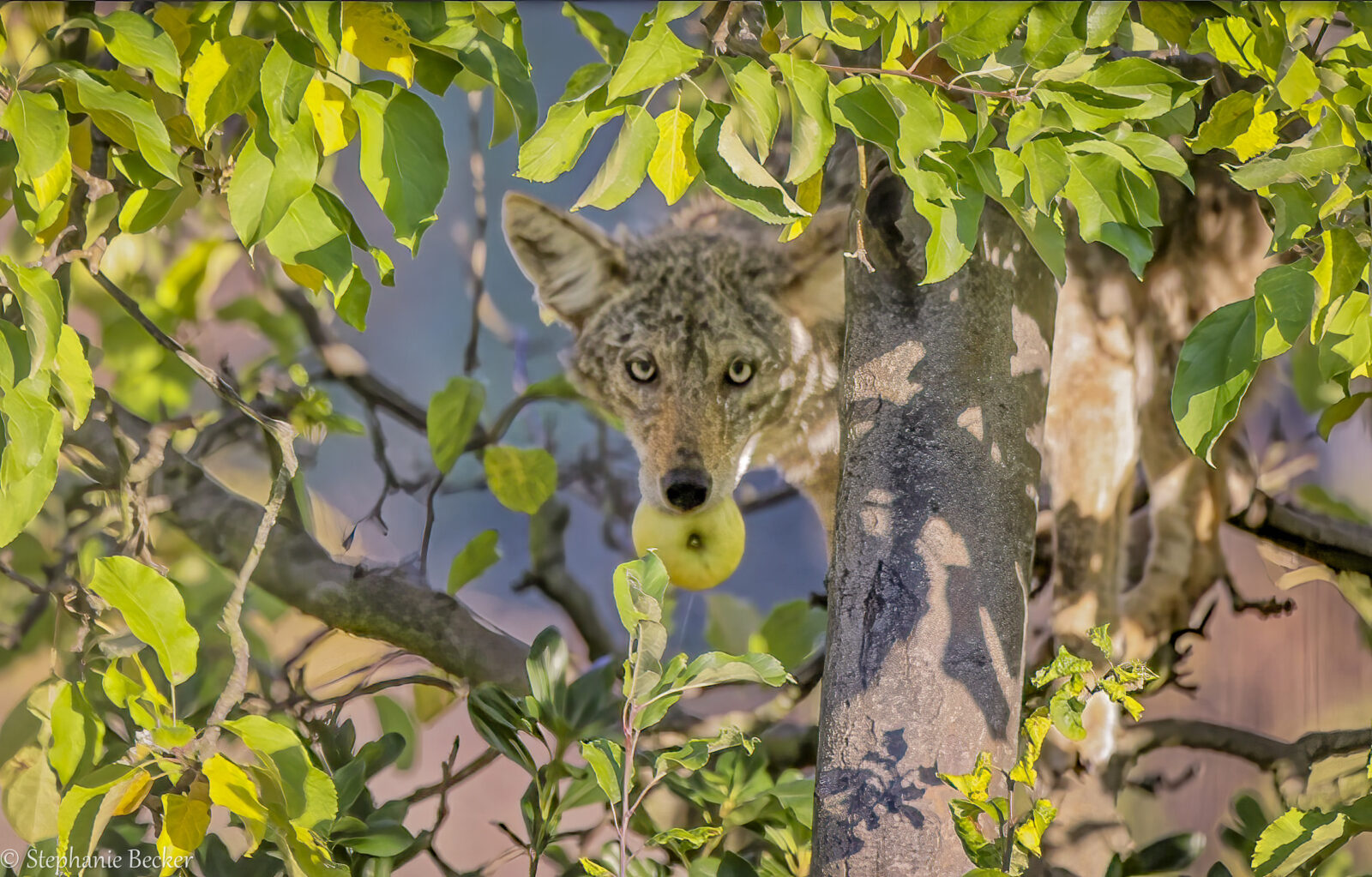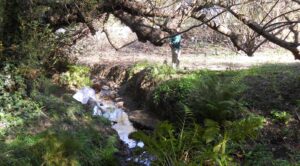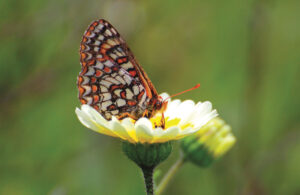Recently, Moraga resident Stephanie Becker was washing dishes at home, when she saw, through the window, some branches shaking in her neighbor’s apple tree. They were shaking quite a lot—”much more than I was used to seeing from our backyard squirrels,” she says.
With neighbors and fences all around, she wasn’t expecting to see a coyote grabbing apples from the tree’s upper branches.
Fortunately, Becker is a wildlife photographer who always has her camera at the ready. She grabbed it and began filming.
The seemingly thin coyote peered through the branches at her as she clicked the shutter. It plucked an apple from a high branch, then delicately descended through the lower branches before leaping to the ground and disappearing with the fruit. Likely, Becker knew, the coyote would use nearby Moraga Creek to travel between the neighborhood and the nearby open space.
Then, she called me to share her excitement at what she’d seen. I operate Point Reyes Safaris, where I guide wildlife lovers and photographers in Point Reyes National Seashore. When Stephanie joined a trip two years ago, we bonded over our deep affection for coyotes. Maligned and misunderstood, coyotes play a critical role in maintaining healthy ecosystems. Yet hundreds of thousands of them are killed each year in the United States. This has driven Becker and me to support organizations such as Project Coyote (for which I am an ambassador), a wildlife-advocacy nonprofit based in Larkspur, Calif., in their effort to end contests where coyotes are indiscriminately killed for sport.
Knowing coyotes don’t typically climb trees, I had to reach out to a few friends in the field.
Here’s what Robert Crabtree, chief scientist and cofounder of the Yellowstone Ecological Research Center shared with me: “In my 40 years of studying coyotes, I have never seen one in a tree.”
‘An evolutionary masterpiece’
Coyotes (Canis latrans) are omnivores. Most of their diet is small mammals such as mice, gophers, rabbits and squirrels. Fruit, birds, insects and fish make up a much smaller portion. During summer in the Bay Area, hikers may find coyote scat that’s packed with berries. But berries don’t require climbing, and apples generally do. That’s where coyote ingenuity comes in.
For coyotes are “an evolutionary masterpiece,” according to Crabtree. “They have the perfect mix of agility, brains and body size to help them adapt to their environment.”
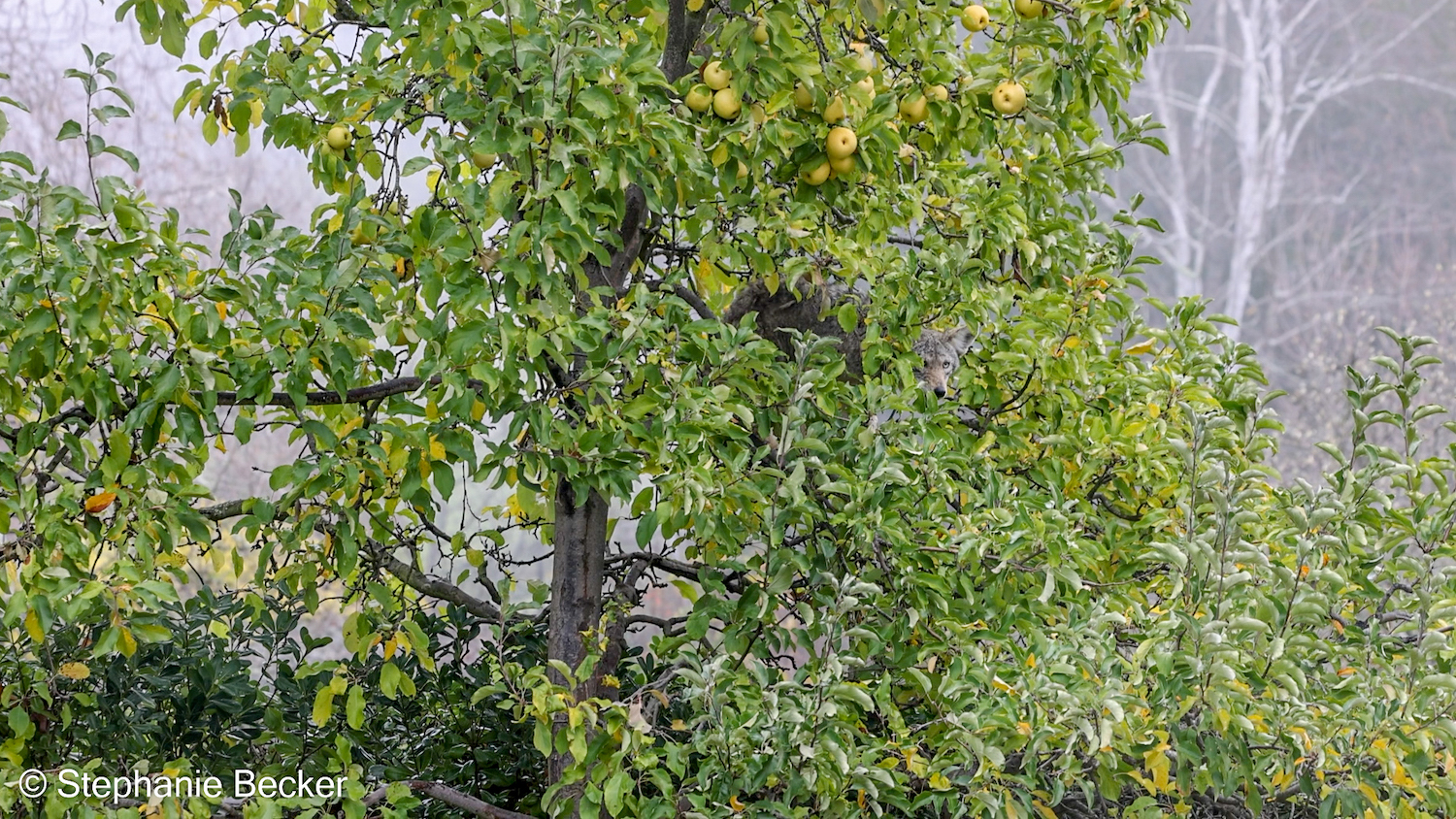
Another canid expert, Benjamin Sacks, concurred, and called the tree-climbing “a fascinating behavior that I have never seen before.” Sacks, who directs a UC Davis genetics lab focused on mammalian ecology and conservation, said that gray fox, not coyotes, are the “known tree climbers” among North American canids—partly, it seems, because coyotes are prone to harassing or attacking gray foxes in areas where the two species co-occur. “This allows them to escape and co-exist with other canids like coyotes who are not known to climb trees,” Sacks said.
Gray foxes (Urocyon cinereoargenteus) are one of only two wild canid species known to climb trees worldwide; the only other wild canid species known to climb trees is the East Asian raccoon dog. They have semi-retractable, hooked claws that allow them to grip and scale trees. They do so to search for prey, sleep or escape from predators. Considered omnivores as well, gray fox eat a wide variety of foods including plenty of fruit.
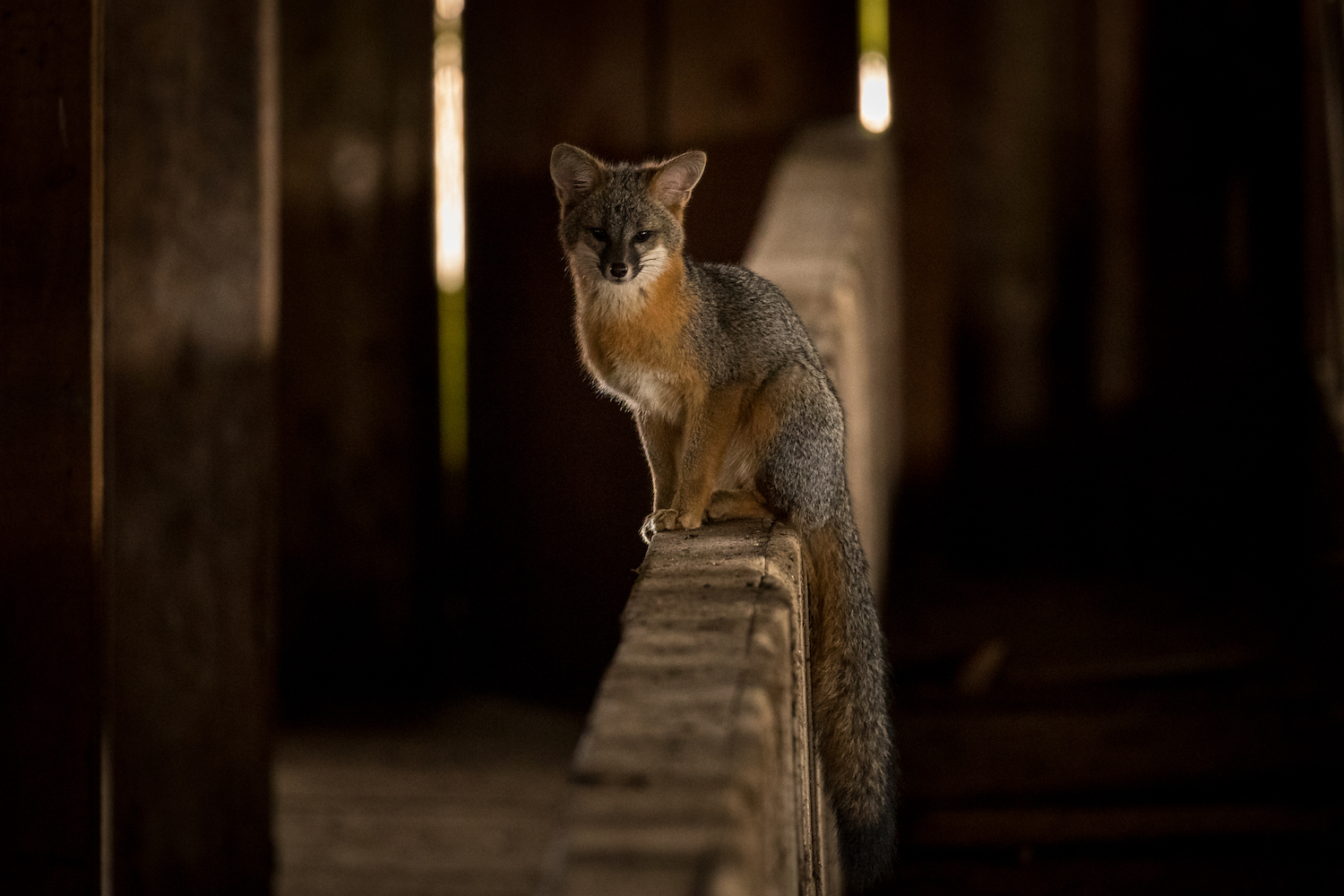
Urban backyard snackers
As coyotes continue to seek out suitable habitat within expanding urban landscapes, urban reports of coyotes are on the rise. Human-coyote interactions are rare, but their presence in many communities has neighbors talking.
For example, in San Francisco, a team of researchers led by UC Berkeley environmental science postdoc Christine Wilkinson reported recently that sightings are becoming more frequent. San Francisco’s animal care and control division has tallied a “significant increase” in reported human-coyote interactions in the past five years, the researchers reported; some 3,900 coyote sightings were reported from 2012 to 2022.
Cases deemed conflicts were significantly higher during pup-rearing season than the rest of the year. As well, negative reports were highest during the pandemic lockdown, when lots of people spent more time in parks.
To avoid conflict with coyotes, Presidio Trust, the federal agency overseeing the Presidio in San Francisco says to keep your dog on a leash, observe posted signage in the park and never feed a coyote.
Project Coyote executive director Camilla Fox, a friend of mine, has been working to improve human attitudes toward coyotes for many years. She, too, had never seen a coyote climbing a fruit tree, though it made sense to her. Coyotes are opportunistic, and “have coexisted with humans for thousands of years, adapting to a wide variety of habitats including deserts, mountains, forests and even heavily populated cities such as San Francisco.” Fox hopes these exciting displays of behavior will help people gain more respect for this keystone species as it continually adapts to its ever-changing environment.
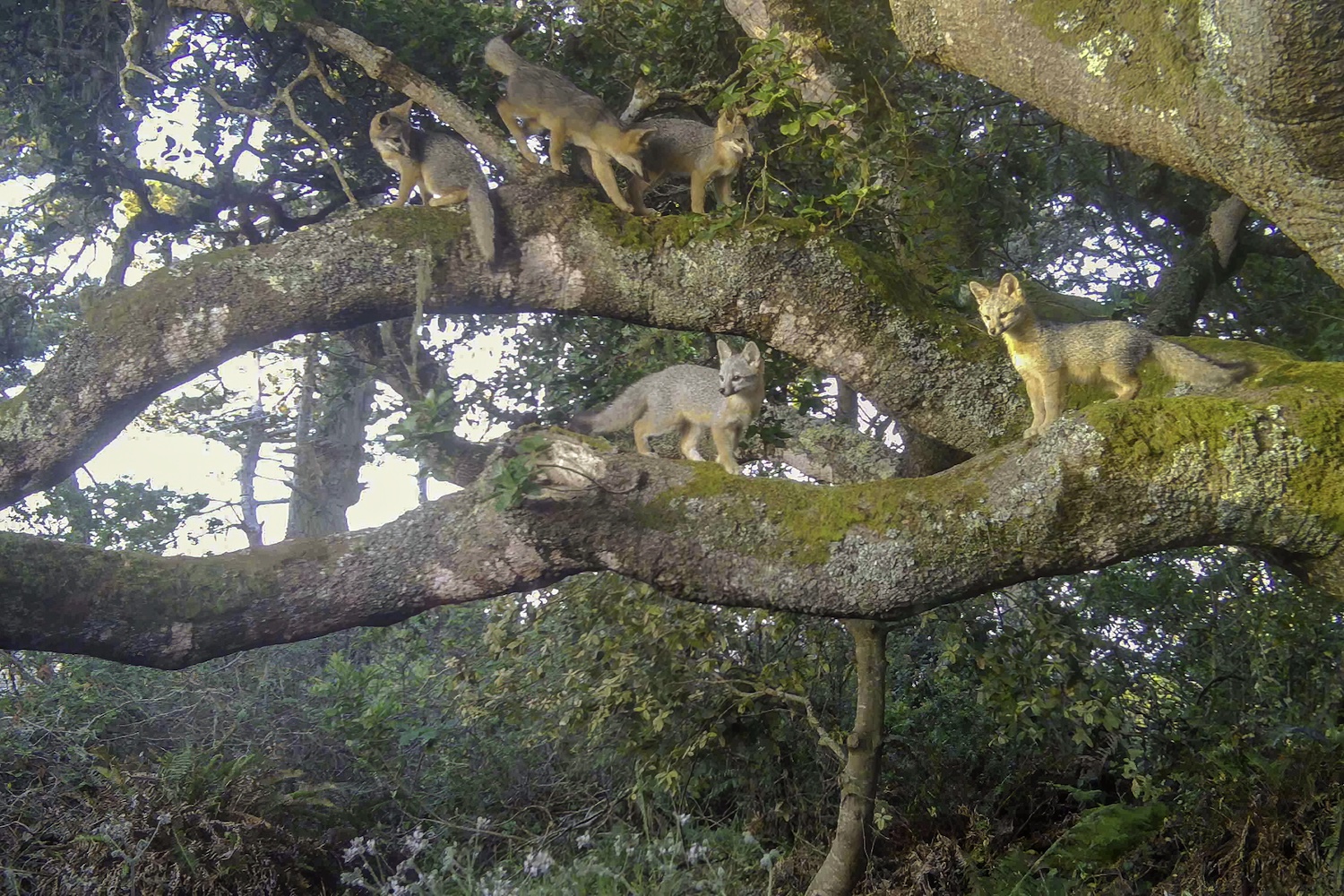
As for Moraga’s tree-climbing coyote, it hasn’t returned to the apple tree, as far as Stephanie and her neighbors know. But they’re happy to have less competition for their apples, as they harvest this year’s bounty for their Thanksgiving hot apple pie.
Anushuya Thapa contributed reporting to this story.

